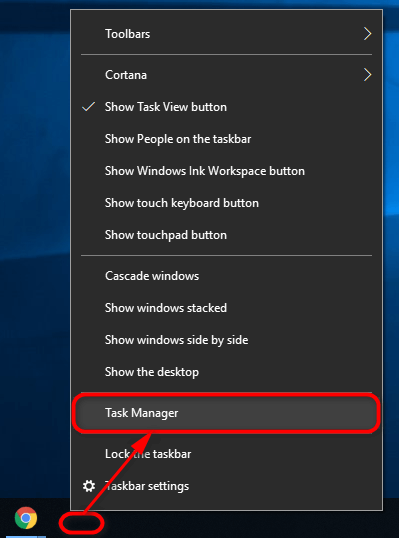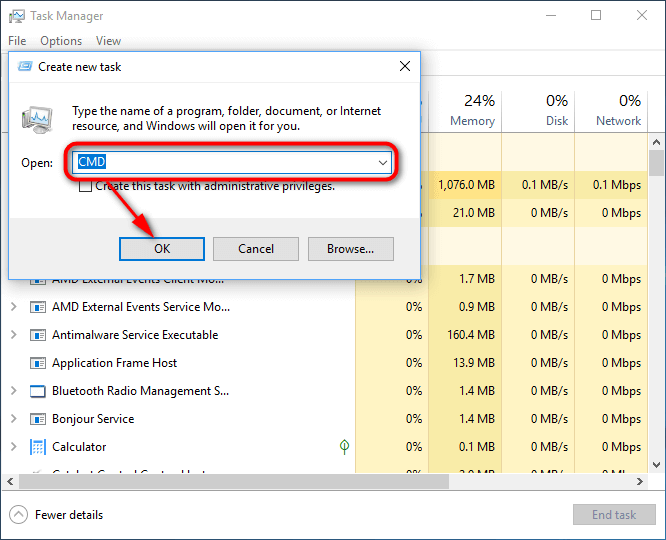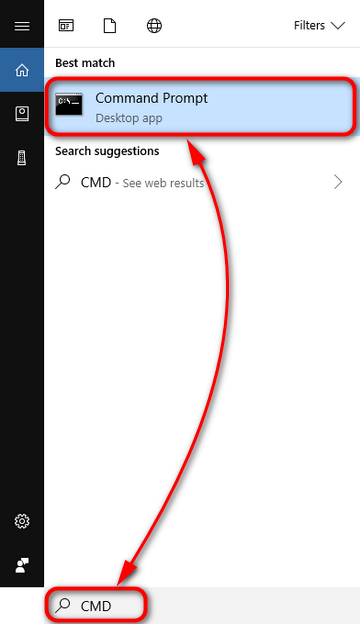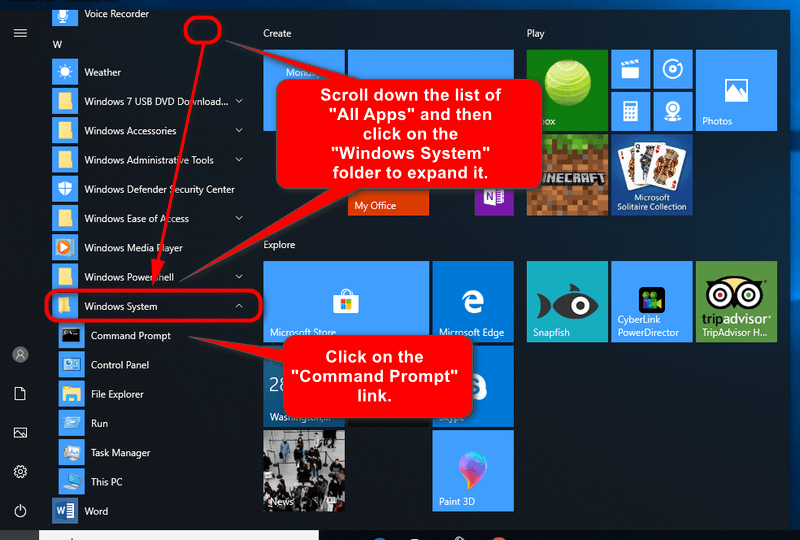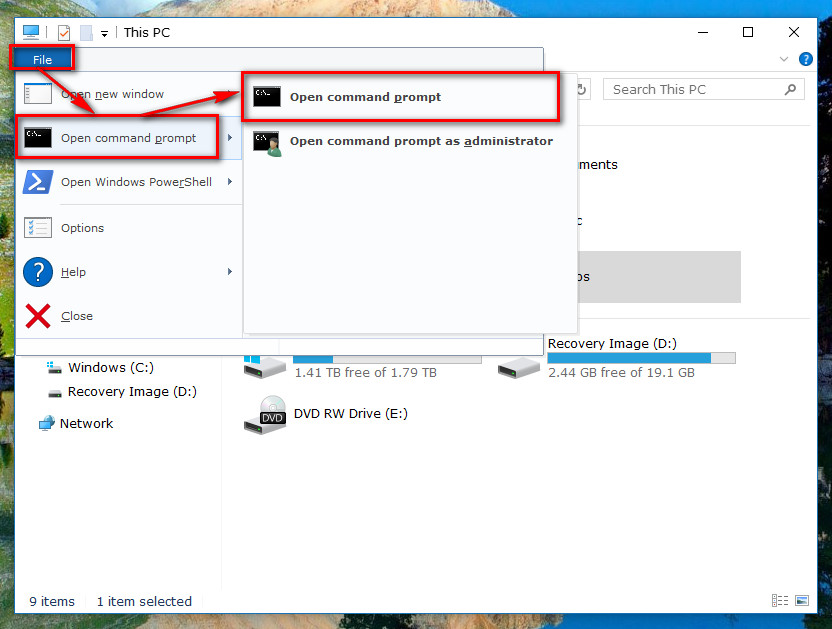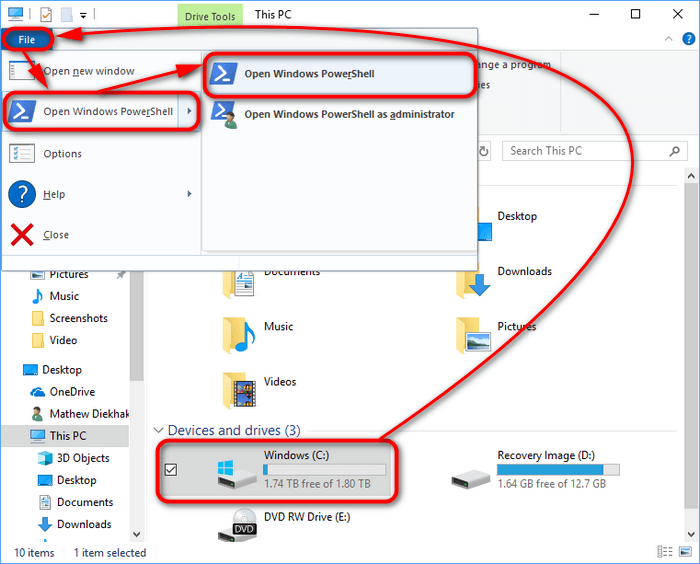Last Updated on December 26, 2022 by Mat Diekhake
As time has gone on there has become less and less emphasis put on the command line. Windows as an operating system never did use its command line as much as some others, and time has shown that Windows prefers offering people a way to navigate to a particular place or to offer them button for executing commands rather than using a command line tool. Nevertheless, there are still plenty of times that you will need to use the command line. This tutorial outlines all the different ways you can get to the command line, which is always by opening the Command Prompt window. It is here that you can then execute your commands. If you’re comfortable with using it, the Command Prompt can offer a way to get things done quicker than the alternatives. To navigate around the Windows operating systems is to offer people an easier way to get from A to B, but there’s nothing quicker than running a command from the command line when they’re available.
Most techies will always use the Command Prompt to some degree. It’s the same as using the Terminal in Mac or Linux operating systems. Basically, instead of browsing through the operating system to try to do something, the Command Prompt allows you to enter commands and then have them executed by the command line.
Advanced Windows users typically use the Command Prompt because of the nature of how it works. For example, you can only use the command line if you know what commands you need to enter. If you want to use the command line but don’t know the commands, then you can research them online, and then give them a try. The more you start using the command line, the quicker you will remember some of them off by heart.
A person who knows the commands in his or her head can start using the Windows operating system far more efficiently than the average users, and all that work you put in to remember the commands will pay off in the long run. Some people don’t bother learning commands because when they open up the Command Prompt, it reminds them of something that was around twenty years ago. While it’s true the Command Line does look outdated, that does not mean that it won’t be around in the future. The Command Prompt will most likely always be a part of the Windows operating system for a long time to come yet because there is no faster way to do something than entering direct commands.
Note: There are quite a few ways you can open the Command Prompt in versions of the Windows 10 operating system. All of the techniques in the guide below are for entering the standard Command Prompt. If you wanted to use the one that has the administrators permissions, then you need to learn how to open an elevated Command Prompt window in Windows 10 instead.
The following tutorial demonstrates what you need to open the Command Prompt in any version of the Windows 10 operating system.
How to Open Command Prompt Power User (Win+X) Menu
Here is how you can open the command line from the Power User menu:
Note: as of Windows 10 build 14971, the Win+X menu shows the PowerShell and PowerShell Admin links by default. You can, however, get the swap the PowerShell for Command Prompt entries from the Settings app.
The Quick Links menu is one of the most efficient ways you can open up the Command Prompt window because you can do it from anywhere. For example, you can do it with the Settings app open, with the File Explorer open, with a web browser open and from the desktop. However, there is one thing standing in your way, and that is a particular setting for the Taskbar that is available from the Settings app. From within the Taskbar link in the settings app (found by heading to the Start menu > Settings > Personalization > Taskbar), you will find an option that you can toggle on or off for “Replacing the Command Prompt with the Windows Powershell in the menu when I right-click the Start button or press the Windows logo key + X.” Make sure that option is turned off first.
Now each time you press the Windows logo key + X to bring up the Quick Links menu, you’ll see the options available to open the Command Prompt and the Command Prompt (admin) if you need to have the administrators version of the command line open instead.
How to Open Command Prompt with Task Manager
Here is how you can open the command line from the Task Manager:
If you right-click anywhere between applications and the system tray in the taskbar and bring up the menu to open up the Task Manager, there is a way you can run a new task to get the Command Prompt open. To get started with this method, right-click the taskbar and then click on the “Task Manager” from the menu.
With the Task Manager now open on its default processes tab, click on the “File” option available at the top of the menu and then click on the “Run new task” option.
As with all versions of the Windows operating system and not just Windows 10, the “CMD” is an abbreviation for the Command Prompt to open. You might know that already by having typed into the Run dialog box before. Type the “CMD” into the field and then click on the “OK” button. (Don’t forget to put a checkmark in the checkbox available for creating the task with the administrative permissions if you want the elevated Command Prompt to open and not just the standard one. The box for that is available directly beneath where you type the “CMD.”)
How to Open Command Prompt with Search Field
Here is how you can open the command line from the search field that is available in the taskbar:
The search box has been moved to the taskbar in Windows 10 to help give the hint that it is there to be used. And rightfully so because it offers an incredibly efficient way to do many things in Windows 10—just like getting the Command Prompt window to open, for example. You can also choose between the admin version of the Command Prompt window or just the standard Command Prompt window from here too.
To get started with either option, just start typing “Command Prompt” into the search box and then click on the Command Prompt desktop application with the left mouse button if you want to open the standard version or the right-click > choose the open Command Prompt (admin) by clicking “Run as administrator” from the menu.
How to Open Command Prompt with Start Menu
Here is how you can open the command line from the list of All Apps in the Start menu:
Open the Start menu and then scroll down the list of applications until you get to the “Windows System” app/folder and click it once to expand it. Now that you can see everything inside the Windows System folder click on the “Command Prompt” entry from the list (typically the first one to be found on the list.)
How to Open Command Prompt with File Explorer
Here is how you can open the command line from File Explorer:
Open the File Explorer by heading to the Start menu > File Explorer from the left pane and then navigate to the This PC > Windows (C:) > Windows > System 32 by entering that same path into the File Explorer address bar found at the top of the screen and then hitting the Enter key found on your keyboards. Next, scroll down the list until you see the CMD entry with the typical Command prompt icon found next to it. Give that icon a double-click to open up the command line.
Note: You can find your C:// drive by clicking on This PC from File Explorer’s navigation pane.
Notes:
Open Command Prompt Here. You can no longer get access to the Command Prompt and Command Prompt admin links from the File menu in File Explorer. This has now been replaced with the Windows PowerShell. You may, however, still run commands you intended to use in the Command Prompt in the PowerShell windows.
Open Command Window Here. You can no longer hold down Shift and right-click on a file or folder and choose the Open command window here link that was in the context menu. This has been replaced with Windows PowerShell. You can, however, still run your commands that you intended for the command line in the PowerShell window.
How to Open Command Prompt with Run Dialog Box
Here is how you can open the command line from the Run dialog:
The Run dialog box has no problems being able to run the Command Prompt window for you either if you prefer it. To do that, just press the Windows logo key + R on your keyboards and then type “cmd” into the available field. Finish it off by clicking on the “OK” button and then the Command Prompt window will open up on the computer’s display.
How to Open Command Prompt Here with File Explorer
If you have a folder or a drive open and want to open the Command prompt from the same location, the Windows 10 operating system does allow you to do that. It’s all about efficiency when Windows offers multiple ways to do something, and not because they couldn’t decide what way was better. To open the command line for a folder or drive, you first need to open up the File Explorer. Do that by navigating to the Start menu > File Explorer and then click on the “File” link at the top of the window. You now need to hover the mouse to touchpad over the “Open Command prompt” to reveal the option to open the standard Command Prompt window of the one with the administrative permissions.
Update: More recent versions of Windows 10 have swapped the Command Prompt and Command Prompt (Admin) entries for the Windows PowerShell and Windows PowerShell as administrator entries.
There has been speculation that Microsoft was planning on replacing the Command prompt with Windows PowerShell since you can execute many of the same commands from PowerShell and it is the PowerShell that can do more for you.
How to Open Command Window Here with File Explorer
If you want to open a folder or drive and don’t want to use the File menu available at the top of the File Explorer window, you can still open up the Command Prompt by right-clicking on the folder or drive and then clicking on the “Open command window here” option from the menu.
There are some issues that the Windows 10 operating system does still have as they transition away from the Control Panel and try to get everyone using the Settings app more. Not everything can be done from the Windows Settings, and the Control Panel needs to be open to do those tasks whereas with most other things they can be done from either the Control Panel and the Settings app which causes people a lot of confusion about navigation. But make no mistake about the navigation when it comes to the Command Prompt windows: they are purposefully available in all of the above locations, so you don’t have to keep navigating to the one spot. Having to do that would not be as efficient as being able to open the Command Prompt from many places.
You might also be interested in:
- How to Change Command Prompt Default Window Size in Windows
- How to Change Command Prompt Screen Buffer Size in Windows
- How to Turn On/Off Wrap Text Output on Resize of Command Prompt in Windows
- How to Enable/Disable Legacy Console for Command Prompt and PowerShell in Windows 10
- How to Customize Command Prompt Colors in Windows 10
- How to Change Command Prompt Font and Font Size in Windows 10
- How to Change Command Prompt Window Position in Windows
- How to Open Elevated Command Prompt in Windows 10
- How to Pause Windows Update Download with Command Prompt in Windows 10
- How to Switch Command Prompt/PowerShell Items on Win+X Menu in Windows 10
You can subscribe to our RSS, follow us on Twitter or like our Facebook page to keep on consuming more tech.



